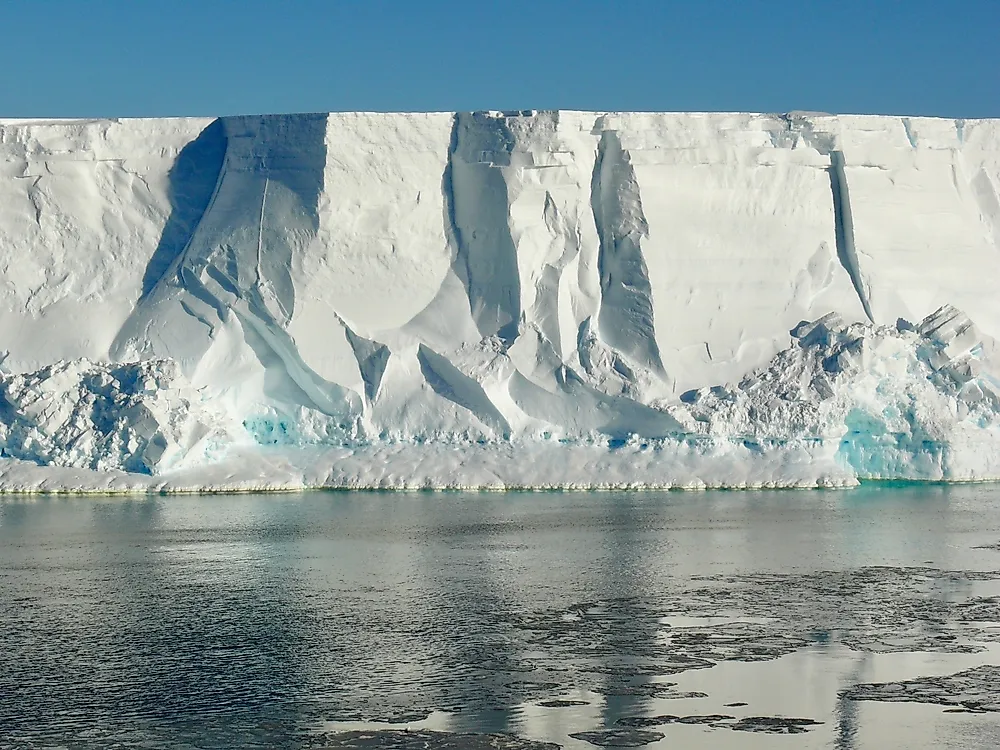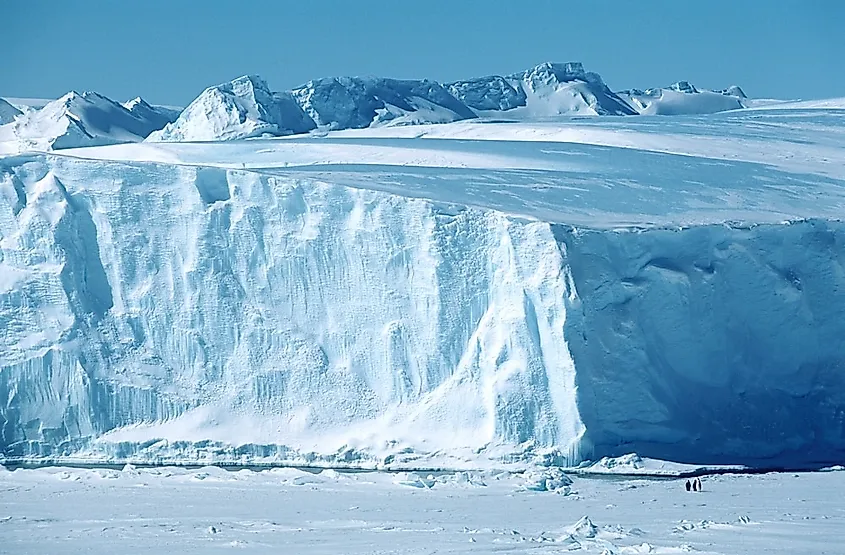The Major Ice Shelves In Antarctica

Antarctica is referred to as the ‘frozen continent.' This massive stretch of land is located in the Southern Hemisphere’s Antarctic region. It contains the geographic South Pole. The Southern Ocean surrounds the mainland of this continent while numerous islands remain scattered throughout the ocean. Antarctica is permanently covered in ice. It hosts numerous glaciers, ice shelves, and ice sheets. Ice shelves are thick floating ice platforms formed by the flow or extension of an ice sheet or glacier to the coast and onto the surface of the ocean. Ice shelves of Antarctica are crucial to providing researchers with an understanding of the severity of the global warming issue. A rate of decrease in the size of these ice shelves could be correlated to the increase in global temperatures and a rise in sea-levels that could lead to catastrophic events in the near future. Here is a list of the largest and most important ice shelves found in Antarctica.
1. Ross Ice Shelf
The Ross Ice Shelf is the largest ice shelf in the entire continent. The size of the ice shelf was found to be 500,809 square km in 2013. It covers a massive area in the Ross Sea’s southern part and stretches to cover the entire area of the Roosevelt Island. The Ross Ice Shelf was discovered on January 28, 1841. 90% of the ice shelf is located underwater. The Ross Ice Shelf is subjected to extensive scientific research. For years, scientists have been intrigued by its composition. Several research camps like the McMurdo Station have been set up on or around the ice shelf to study its behavior.
2. Filchner-Ronne Ice Shelf
This ice shelf is the second largest Antarctic ice shelf. It borders the Weddell Sea. The Berkner Island divides the seaward facing part of the ice shelf into Western (Ronne) and the Eastern (Filchner) sections. The ice shelf covers an area of 422,420 square km. The ice in this ice shelf is subject to calving which is the process of separation of ice sheets from the shelves to form icebergs. A number of glaciers like the Recovery Glacier, Slessor Glacier, and others feed the ice shelf. A study published in the Nature journal predicts that this ice shelf could disappear by the end of the century and contribute to 4.4 mm of sea-level rise per year.
3. Amery Ice Shelf
The Amery Ice Shelf, part of the Mac. Robertson Land extends into the Prydz Bay in Antarctica. With an area of 62,620 square km, it is the continent’s third-biggest ice shelf. Like other ice shelves in the Antarctic region, the Amery is also subjected to many scientific studies. Holes have been drilled through it to extract the samples from the seabed below the ice shelf and study its fossil composition.
4. Larsen Ice Shelf
With an area of 48,600 square km, this feature is the fourth biggest ice shelf in Antarctica. It is located in the Weddell Sea’s northwest part. Although the ice shelf occupied a much larger area in the past, in recent years, it has shrunk greatly.
5. Riiser-Larsen Ice Shelf

Emperor penguins at the Riiser-Larsen Ice Shelf.
This ice shelf encompasses an area of 48,180 square km. It is located on Queen Maud Land’s coast. The ice shelf extends for a distance of 400 km. Various parts of it were sighted by different explorers and expedition teams over a period of decades. However, most of the photographs of this ice shelf were captured during a joint Antarctic Expedition by Norway, Britain, and Sweden, from 1951 to 1952. The ice shelf has been named after an Antarctic explorer.
6. Fimbul Ice Shelf
The Fimbul Ice Shelf covers an area of 41,060 square km from 3°W to 3°E on the borders of the coast of Queen Maud Land. The Jutulstraumen Glacier feeds this ice shelf. The ice shelf was first photographed from the air between 1938 and 1939 by a German Expedition to the frozen continent.
7. Shackleton Ice Shelf
The seventh largest Antarctic ice shelf is located on the coast of East Antarctica and extends as part of the Mawson Sea. The ice shelf has an area of 33,820 square km. The ice shelf was first discovered and mapped by USEE in 1840. It has been named after the famous polar explorer, Sir Ernest Shackleton.
8. George VI Ice Shelf
This ice shelf occupies an area of 23,880 square km in the George VI Sound that separates the Palmer Land from Alexander Island. The ice shelf stretches for a distance of about 56 km from the Ronne Entrance to the Niznik Island.
9. West Ice Shelf
The 16,370 square km large West Ice Shelf is the ninth largest ice shelf in Antarctica. It extends for a distance of about 288 km between the Posadowsky and Barrier bays in East Antarctica. The ice shelf was first observed during the First German Antarctica Expedition that took place from 1901 to 1903. Since the feature was first viewed from the western side, it was named the West Ice Shelf.
10. Wilkins Ice Shelf
The tenth largest Antarctic ice shelf covers an area of 13,680 square km in the Wilkins Sound. The ice shelf’s northern part was first mapped in 1910. In 1929, the ice shelf was observed from the air. What remains of the ice shelf today is only a small portion of its original size. Global warming has speeded up the collapse of this ice shelf. Scientists fear that loss of this huge mass of ice in the near future could significantly contribute to the rise in sea-levels.
The Major Ice Shelves In Antarctica
| Rank | Ice Shelf | Size |
|---|---|---|
| 1 | Ross | 472,960 km² |
| 2 | Filchner-Ronne | 422,420 km² |
| 3 | Amery | 62,620 km² |
| 4 | Larsen | 48,600 km |
| 5 | Riiser-Larsen | 48,180 km² |
| 6 | Fimbul | 41,060 km² |
| 7 | Shackleton | 33,820 km² |
| 8 | George VI | 23,880 km² |
| 9 | West | 16,370 km² |
| 10 | Wilkins | 13,680 km² |











